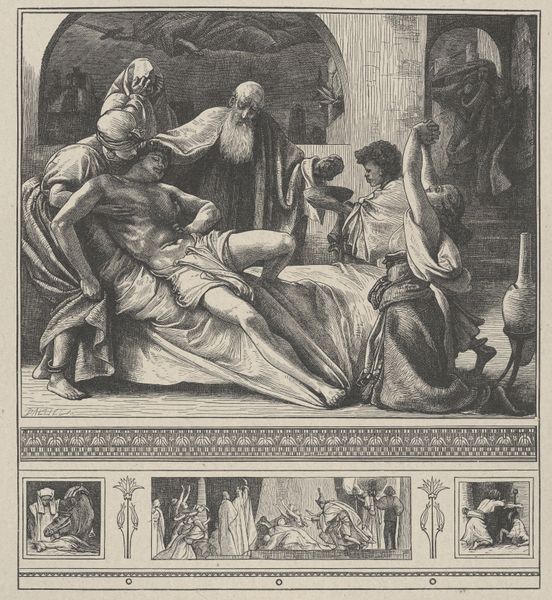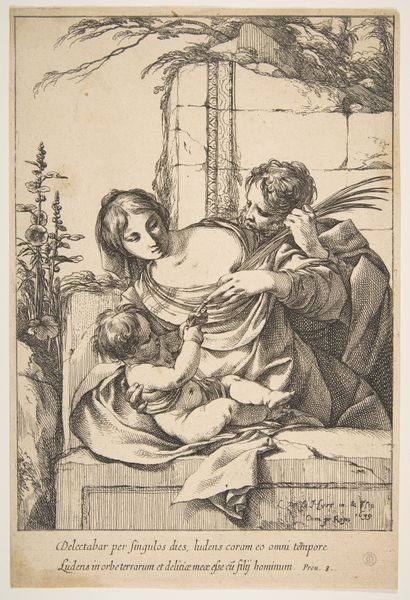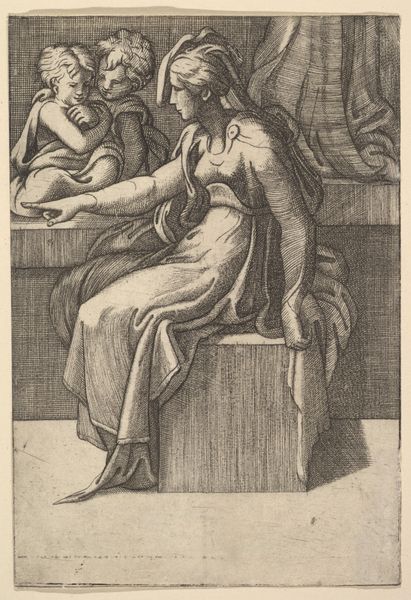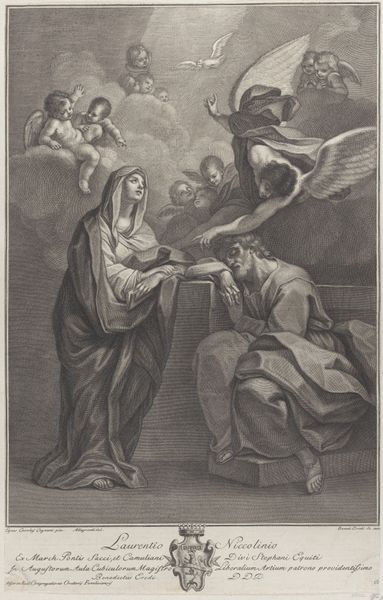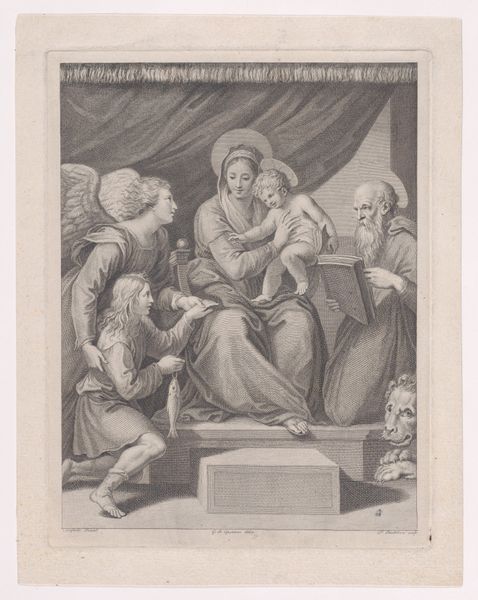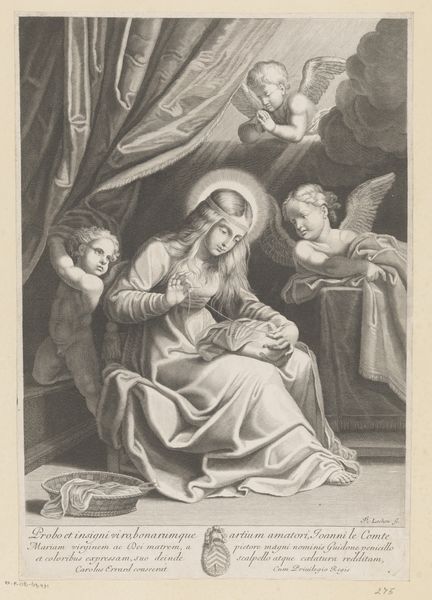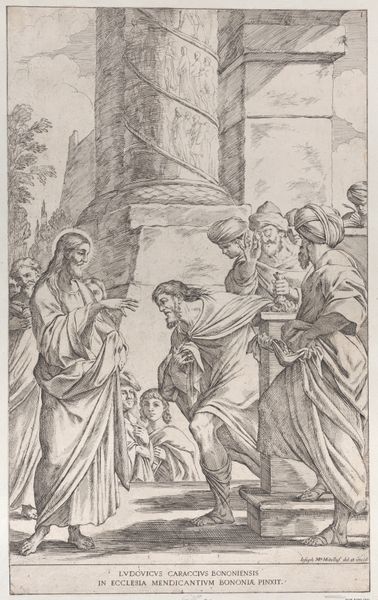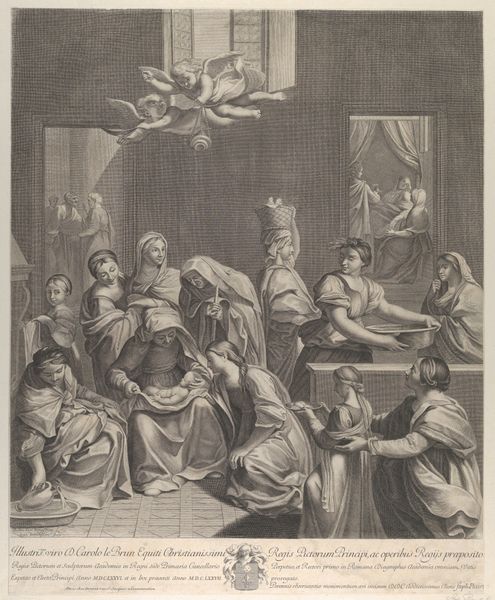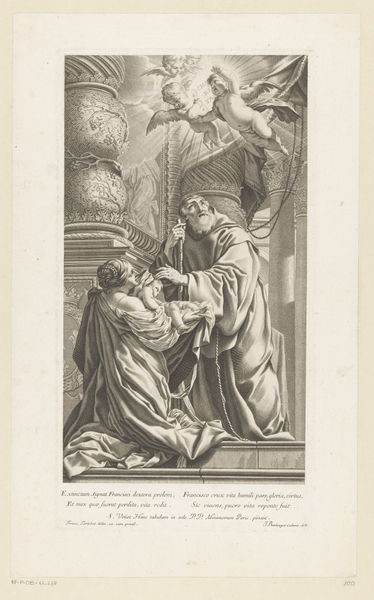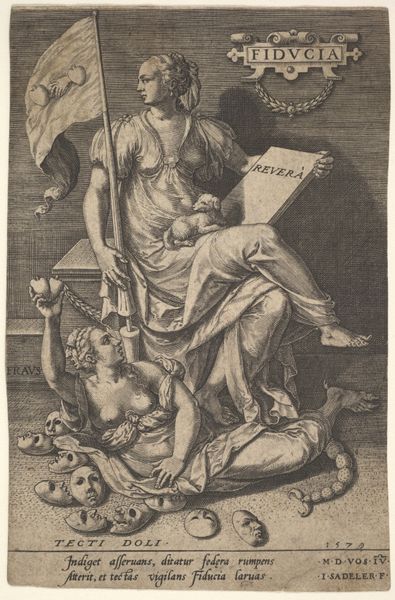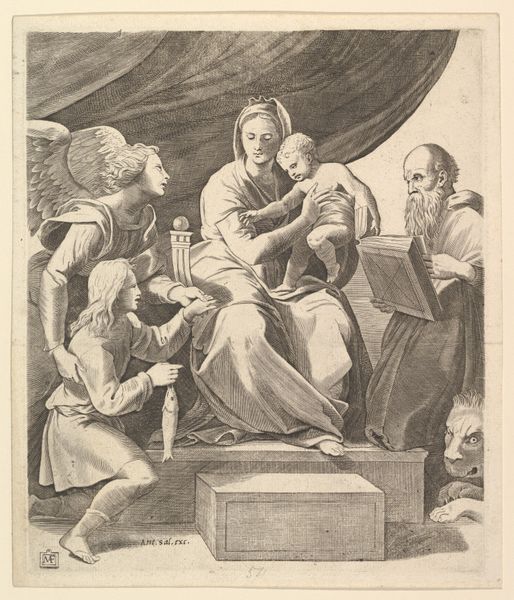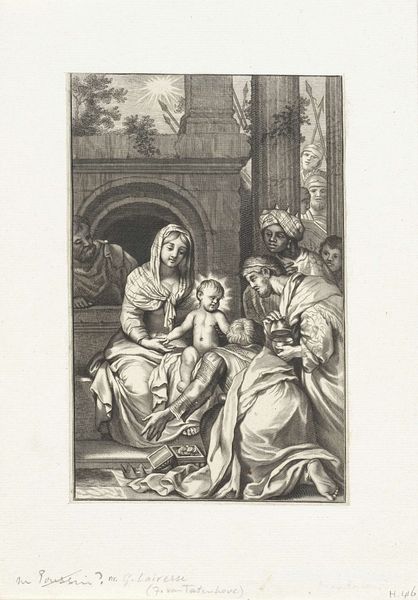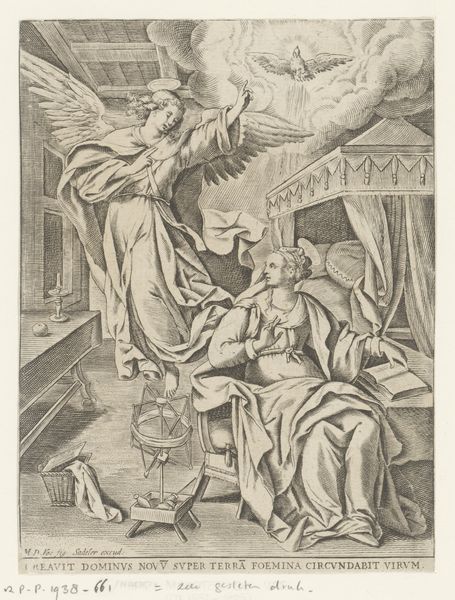
drawing, print, engraving
#
drawing
#
allegory
# print
#
mannerism
#
figuration
#
italian-renaissance
#
engraving
Dimensions: sheet: 12 11/16 x 9 13/16 in. (32.2 x 25 cm) trimmed to platemark
Copyright: Public Domain
Curator: Giorgio Ghisi's engraving, "The Mystic Marriage of St. Catherine," likely completed sometime between 1520 and 1582, is striking. My first thought is how precisely this image replicates the artistic process of engraving through repetitive marking in mass production. Editor: My eye is immediately drawn to the figures. St. Catherine kneels before the Virgin and Child, who places a ring on her finger, seemingly a betrothal, all rendered with the detailed flourish we associate with Mannerism. There is a clear engagement with allegory here; what is it communicating about feminine agency in the Renaissance? Curator: Well, the medium itself speaks volumes. The act of engraving, cutting into a metal plate and then printing multiple images, echoes the era's growing capitalist structure. We can think about the means of production but, just as significantly, reproduction of imagery on devotional acts like this. How was this accessed, and by whom? Editor: Indeed. This piece allows the consideration of women and religion in society. This representation, likely circulating among elite circles given the material cost and production process, reaffirms both their piety and place, reinforcing religious doctrine through highly codified gender roles. We have the figures themselves set in an earthly landscape; do the materials signal a desire for material possession or worldliness? Curator: Perhaps. And think of the artist’s labor—the sheer physicality of cutting these intricate lines into the metal plate, often working from preparatory drawings. We're also dealing with skilled craftsmanship becoming increasingly linked to entrepreneurial endeavours. A piece such as this allows art making as process and the relationship between artists and audiences of varied means to be more democratically studied through reproduced prints. Editor: It serves as a reminder that art always operates within a complex web of social, economic, and spiritual values. And that artistic value is based on so much more than a singular aesthetic interpretation. Curator: Exactly. By considering both its historical placement and construction, we broaden and deepen its story.
Comments
No comments
Be the first to comment and join the conversation on the ultimate creative platform.
